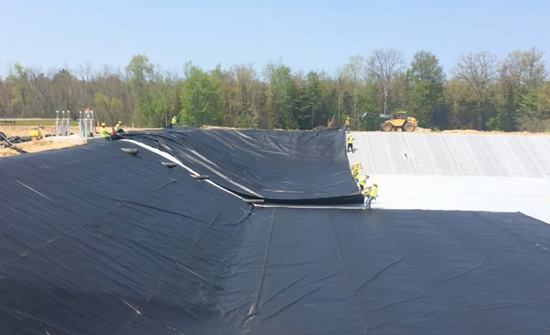In October 2017, the Geosynthetic Research Institute (GRI), which is part of the Folsom, Pennsylvania-based Geosynthetic Institute (GSI) published the GRI-GM19b specification: “Seam Strength and Related Properties of Thermally Bonded Reinforced Polyolefin Geomembranes/Barriers.” The finalization of GM19’s substantial update was a significant achievement for GSI’s member companies and the overall industry.
Download a copy of GM19b (PDF)

GRI-GM19A & GM19B
GRI’s specifications have been internationally influential in manufacturing quality control protocols, have served as inspiration for standards committees, and all in all helped fill voids in the practice where larger industry agreement is needed in order to appropriately serve ever-growing material and market sectors.
The publication of GM19b follows upon the July 2017 publication of GRI-GM19a, “Seam Strength and Related Properties of Thermally Bonded Homogeneous Polyolefin Geomembranes/Barriers.”
Separating the original GM19 into 19a and 19b to focus on the differences between homogeneous and reinforced materials was not an easy endeavor. The September 2017 newsletter from GSI noted some of the motivation for the update.
“There are now five scrim-reinforced geomembranes available and the properties are listed in our GRI Specifications,” GSI’s team wrote. “To compliment these sheet products, a set of shear and peel tests are presently being evaluated. Eventually, a new specification designated GRI-GM19b will be developed. GRI-GM19a will then be solely for homogeneous geomembranes.”
Regarding the October release of GM19b, Dr. George Koerner (GSI Director) commented:
The GRI-GM19 rewrite and breaking it apart into sections GRI-GM19a and GM19b was a rather large undertaking that consumed a big part of our summer of 2017 at GSI. The quest was to get all [geomembrane] seams tested on the bases of 25mm (1 in) wide specimens. The new specifications allow for both lab and field testing of all geomembranes and barrier materials. It eliminated the need for grab tensile testing of reinforced seams per the old NSF 54 specification.
The process involved considerable debate in the industry-wide quest to find agreement on what values should be included in the specification.
In the end, “everything in the tables is backed up by much real world data from several different projects,” Koerner said.
He also noted that special thanks was due to the efforts of Gary Kolbasuk (Raven Industries) and Mark Wolschon (EPI, The Liner Co.) in helping bring the revised GM19a and GM19b specifications to publication.
Learn more about the Geosynthetic Institute’s specifications, white papers, professional development webinars, and more at www.geosynthetic-institute.org.











